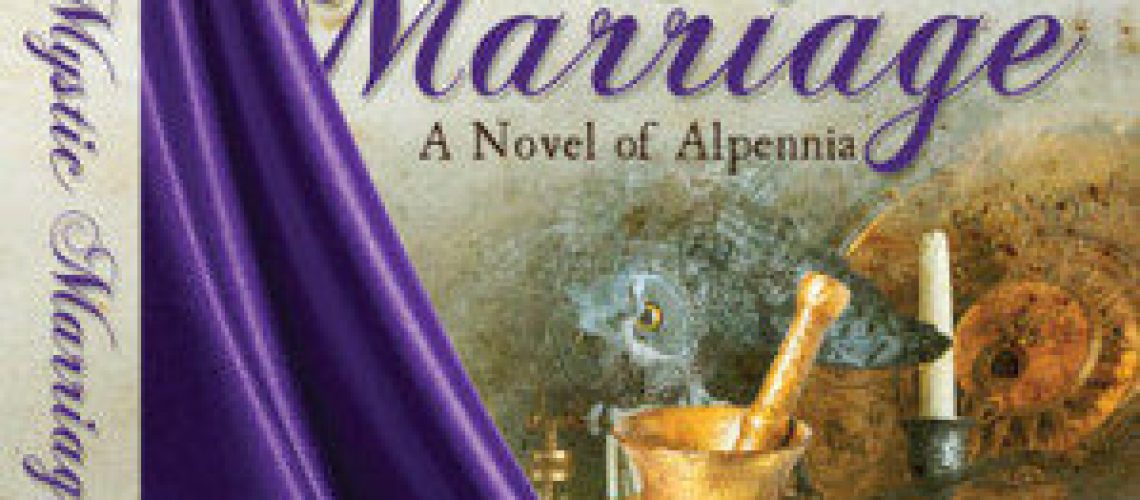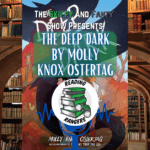My Superpower is a regular guest column on the Skiffy and Fanty blog where authors and creators tell us about one weird skill, neat trick, highly specialized cybernetic upgrade, or other superpower they have, and how it helped (or hindered!) their creative process as they built their project. Today we welcome Heather Rose Jones to talk about how the power of root cause analysis relates to The Mystic Marriage.
You might not think that the same superpower would come in handy both as a fantasy novelist and as an industrial root cause investigator. But I have a preternatural ability to maintain multiple competing unfinished causal structures in my mind, feeding facts into them bit by bit until a pattern emerges from the swirling chaos, the contradictions fall away, and what remains is—if not the only truth—then at least one possible truth that is consistent with the facts.
It’s fairly easy to see how an ability like this might come in handy when doing failure analysis at a pharmaceutical manufacturing plant. You start with an observation that something has gone wrong—perhaps a complex failure well removed in time and space from whatever the causal event was—and you start throwing all the data you can think of into a heap until bits of facts start to stick together in odd ways. Or perhaps you notice the one purple fact lying among the assortment of orange and yellow facts. And then you start asking, “Given the laws of the physical world, the known constraints on the manufacturing process, and the observed facts of this particular instance, what are the possible stories that could make sense here?”
Stories. That’s where my worlds intersect. Root cause analysis is all about identifying the story that fits with the characters, the setting, and the plot as best you’ve been able to identify them. And when the characters and setting and plot were all laid out, the story that was consistent with them became my new novel, The Mystic Marriage.

My first novel, Daughter of Mystery, had originally been intended to be a stand-alone. In fact, it wasn’t originally meant to be a novel at all, but an exercise in a new approach to the writing process. Rather than plotting it all out in advance, I just started writing and letting the story unroll. As I wrote, the basic plot and characters became elaborated with fractal detail, simply because that’s what the real world is like. And time and again, I found that some minor detail or background character that I’d included just for setting and color became the key to a later plot development that I hadn’t known existed until it turned up on the page. The more I wrote, the more of that invisible, unknown causal structure became concrete and turned into the framework for new details and events. It felt very much akin to “discovering” that root cause and its ensuing chain of events, as if the plot had an external reality that I, as author, only had to reveal.
And then, when that first book was all finished, I realized that I’d sown the seeds for another story that wanted to be told. It was like that first observation of a manufacturing discrepancy: the glimpse of a clue of a complex underlying story that it was my job, as author, to trace from beginning to end.
In The Mystic Marriage, Antuniet Chazillen was that discrepancy. We’d seen bits and glimpses of her during the earlier story of how Margerit Sovitre had discovered her talents as a thaumaturgist, how her bodyguard Barbara had tracked down her true parentage and heritage, and how the two of them had come to a meeting of minds and hearts through the shared joys of scholarship and the hazards of court intrigue. Antuniet was brilliant, prickly, and proud. She, too, was a scholar—less skilled at thaumaturgy, but deeply interested in alchemy. At the end of the first book, Antuniet’s world had been shattered. Her brother, Baron Saveze, was executed for treason. Her mother, who had provided the evidence against him, had taken her own life. Disgraced, ruined, destitute, her family stripped of their noble rank, Antuniet fled her home in Alpennia to pursue her alchemical studies in Prague.
That was what I knew about her—that, and the certain knowledge that the next book would be her story.
So I began assembling facts and observations. What did she want most? To redeem her family’s name and honor. How would she accomplish it (and I knew she would accomplish it somehow)? Alchemy would be the key, but I knew little more than that. And I knew one more thing: Antuniet would fall in love with the most unlikely person imaginable.
A scene came vividly into my mind. Antuniet has realized, through an accidental divination, that she has fallen for the light-hearted, flirtatious social butterfly, Jeanne Vicomtesse de Cherdillac. Antuniet is certain Jeanne sees her as nothing more than an easy and temporary conquest. But in the midst of their confrontation, Jeanne says, “They say if a man is starving and can’t get bread, he will eat the husks from the threshing floor just to fill the emptiness in his belly. Don’t blame me for what I’ve done when I was hungry.”
Those were my facts: a beginning, an emotional crisis, and a personal triumph of unknown mechanism. How would they tie together? What chain of cause and effect could possibly give Jeanne an entry into Antuniet’s bruised and shuttered heart? What would be the end of Antuniet’s alchemical researches, and how could that end erase an act of treason? And what part would Margerit and Barbara play, whose struggle to survive in the first book had been the direct cause of Antuniet’s plight? Threads and details that had appeared in Daughter of Mystery only as setting suddenly became meaningful and relevant. Bits and pieces in the heap of facts were starting to stick together. I wrote as if the story had always existed.
Along with this web of causal chains, the story became laced through with two metaphors: bread and alchemical transformation. Bread sustained the characters: bread as poverty, bread as nourishment, bread as communion. But it was the transformative conjunction of gross matter into a sublime and elevated elixir through the alchemical Mystic Marriage that gave the book its title and its consummation.
—————————-
About the author:
 Heather Rose Jones is the author of Daughter of Mystery and The Mystic Marriage, the first two parts of a Ruritanian Regency-era historic fantasy series from Bella Books. Her short stories have appeared in a variety of markets including the Sword and Sorceress anthology series and most recently Podcastle.org. A PhD in Linguistics specializing in the semantics of Medieval Welsh prepositions was a natural precursor to a career as a discrepancy investigator for a major biotech pharmaceutical company. Information about her publications can be found at alpennia.com and you can follow her on Twitter as @heatherosejones. She blogs on all manner of topics at hrj.livejournal.com, but especially on research sources useful for writing historic lesbian characters, under the heading of the Lesbian Historic Motif Project.
Heather Rose Jones is the author of Daughter of Mystery and The Mystic Marriage, the first two parts of a Ruritanian Regency-era historic fantasy series from Bella Books. Her short stories have appeared in a variety of markets including the Sword and Sorceress anthology series and most recently Podcastle.org. A PhD in Linguistics specializing in the semantics of Medieval Welsh prepositions was a natural precursor to a career as a discrepancy investigator for a major biotech pharmaceutical company. Information about her publications can be found at alpennia.com and you can follow her on Twitter as @heatherosejones. She blogs on all manner of topics at hrj.livejournal.com, but especially on research sources useful for writing historic lesbian characters, under the heading of the Lesbian Historic Motif Project.







